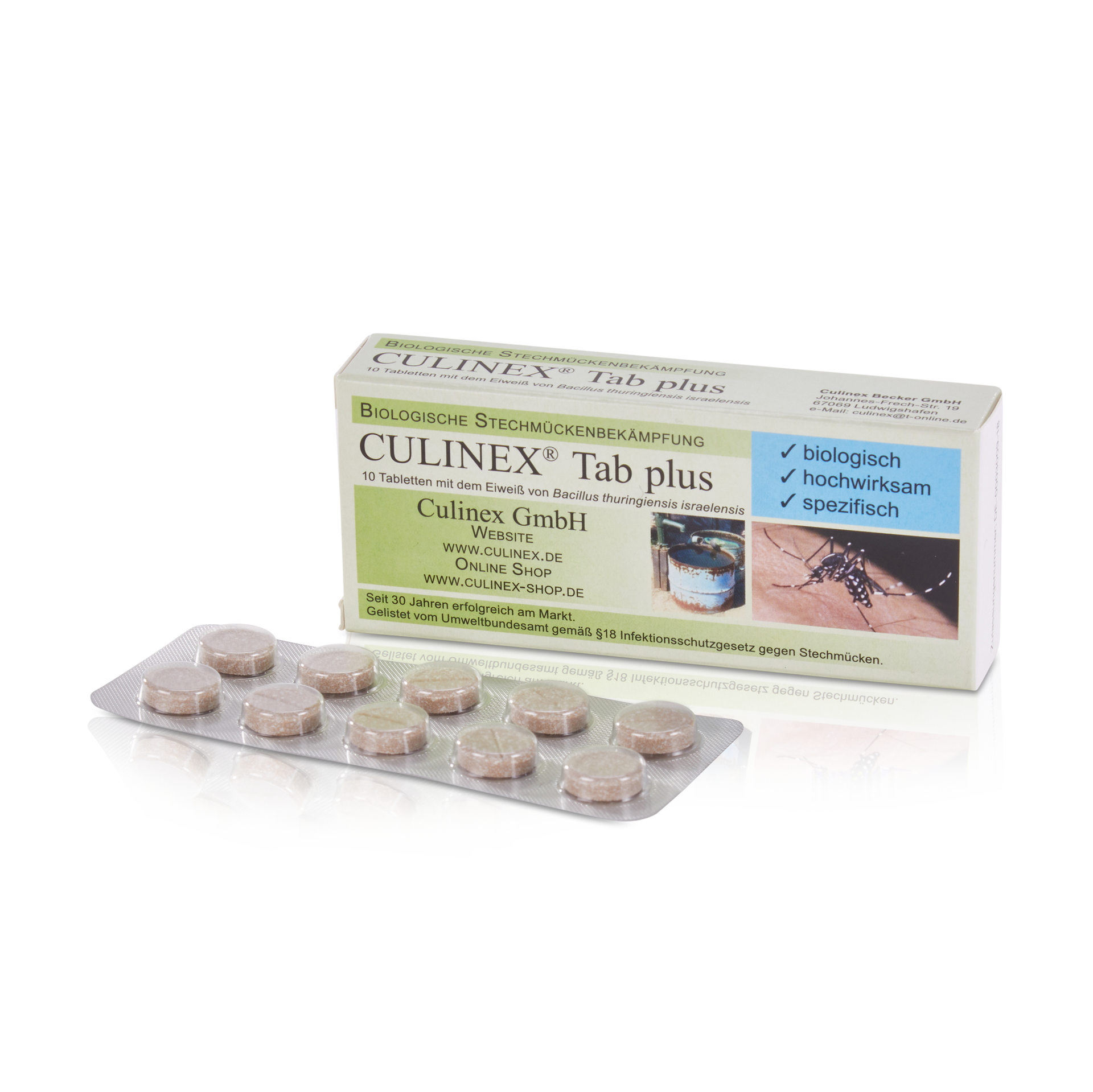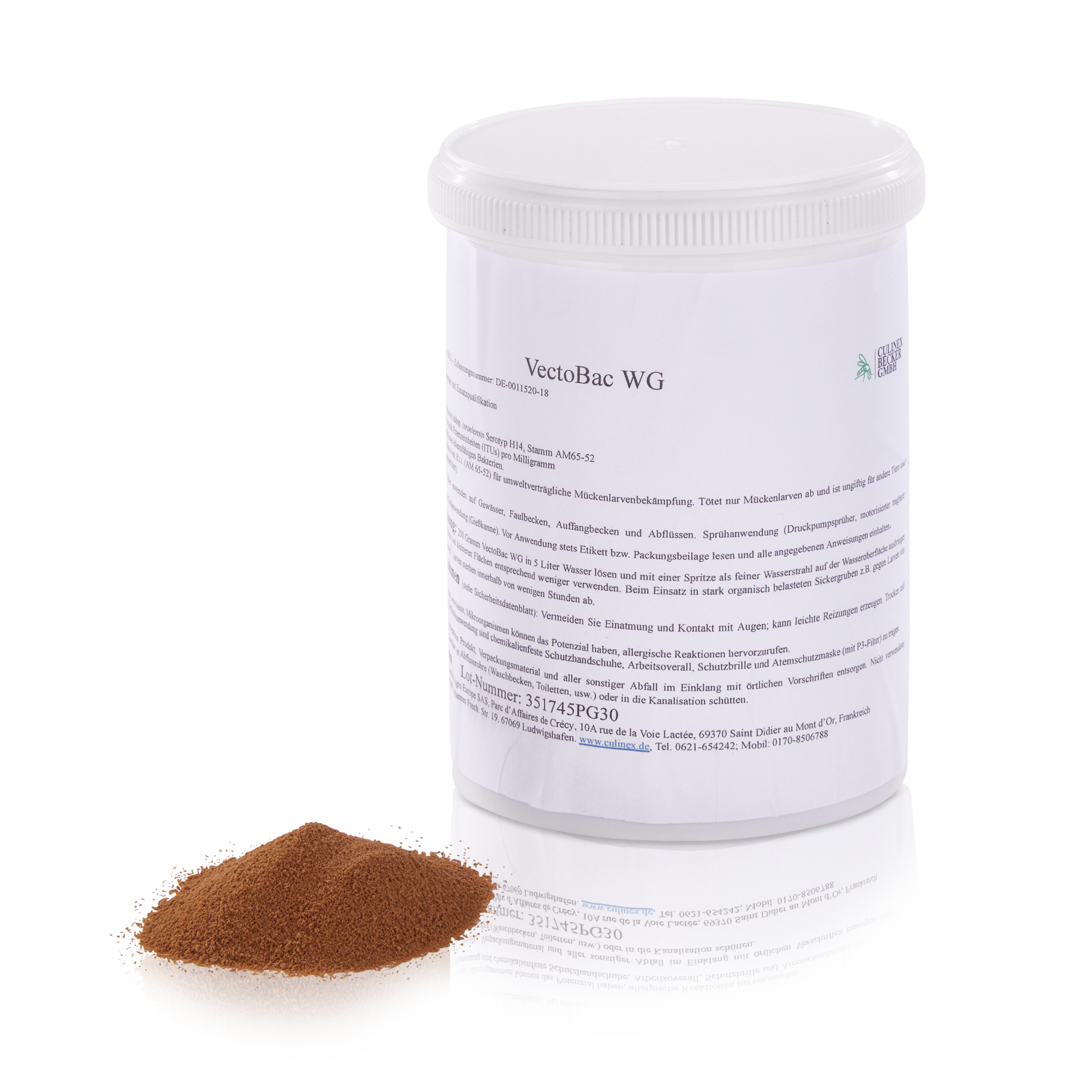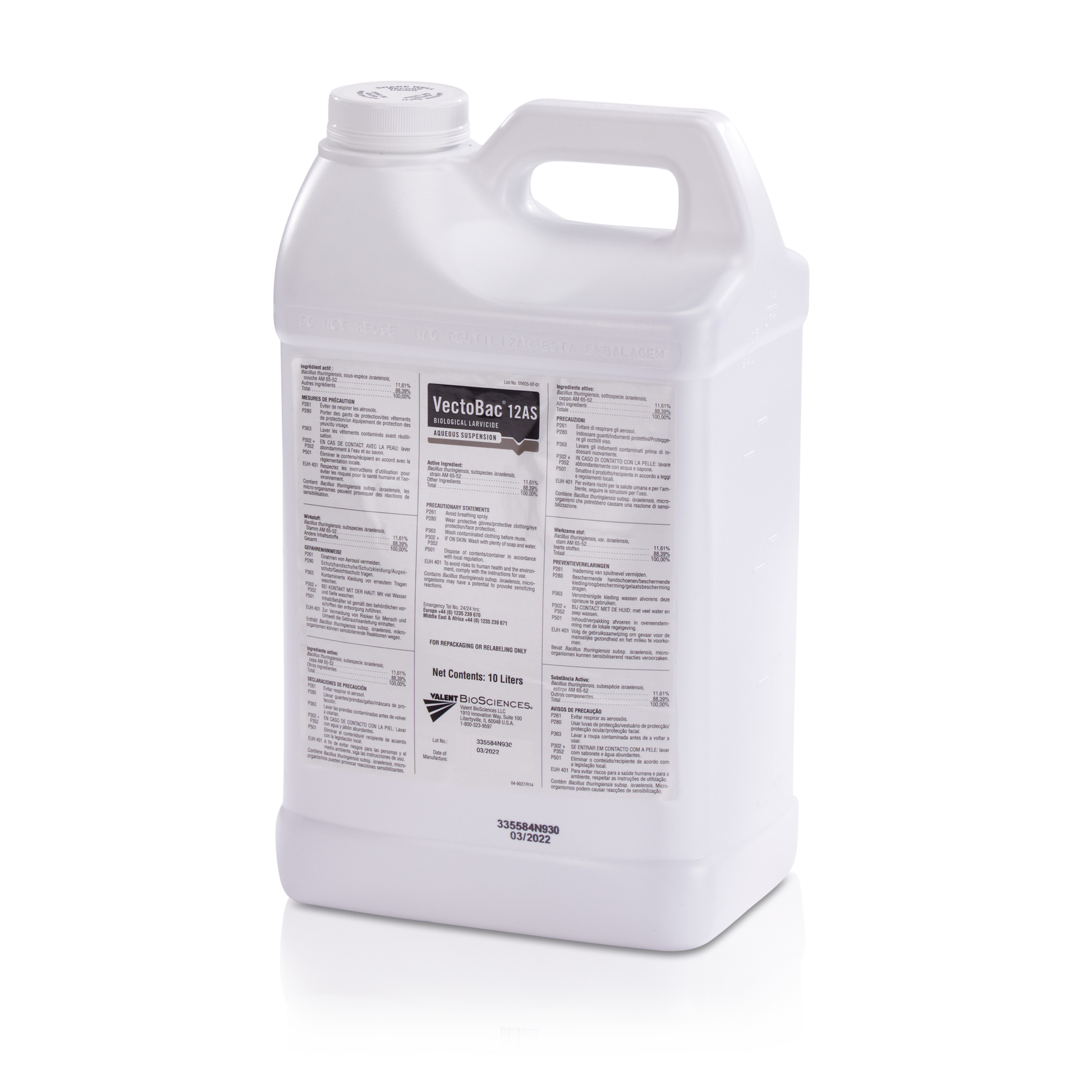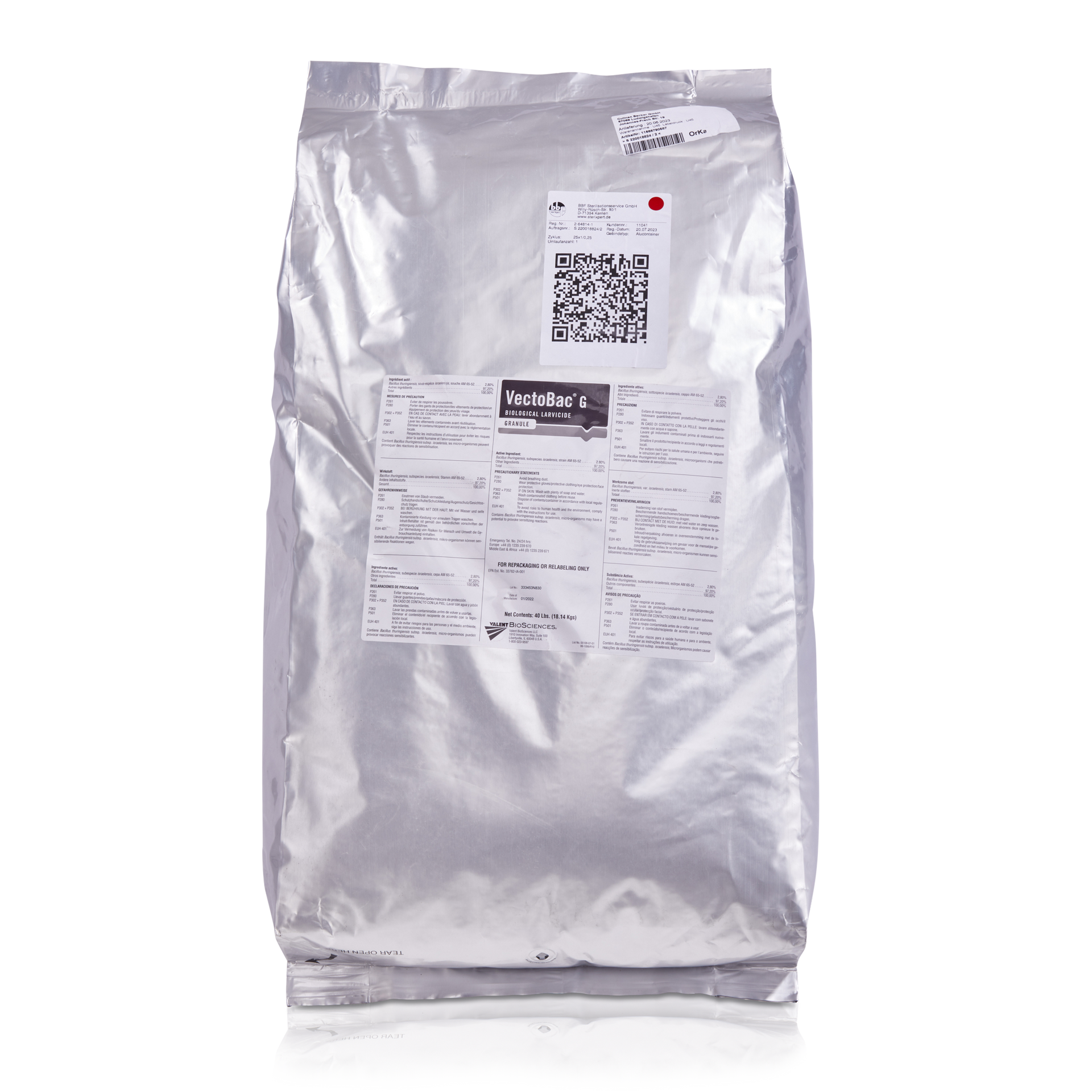Biological mosquito control
The need to combat: mosquitoes as nuisances and disease vectors
In the tropics and subtropics, mosquitoes transmit dangerous diseases such as malaria (pathogen: various Plasmodium species), dengue, yellow, Zika or chikungunya fever (main vectors of viral diseases are: Aedes aegypti and Aedes albopictus), lymphatic filariasis (worm disease; main vectors: Culex quinquefasciatus, Mansonia spp.), encephalitis (viral disease; vectors: Aedes, Culex, Mansonia).
Today, mosquitoes also transmit dangerous diseases to humans in Europe. In 2010, a tourist in Croatia was infected with dengue through a bite from a tiger mosquito. In southern France, there have been regular local transmissions of dengue and chikungunya viruses since 2010. A similar picture has emerged in the heavily infected areas of northern Spain since 2015. In Italy, there were outbreaks of chikungunya fever in 2007 and 2017 and individual transmissions of dengue viruses since 2020. In Germany, mosquitoes have so far played no or only a minor role as vectors of disease to humans. Their bite causes more or less severe hives, depending on the sensitivity of the individual.
The hives are caused by the release of protein-containing saliva by the mosquito, which prevents blood clotting and thus enables the absorption of blood.
Occasionally, the hives may become inflamed due to secondary infections, such as scratching, or even allergic reactions may occur, which may be accompanied by feverish phenomena. This is particularly observed in young children.
However, the transmission of diseases by mosquitoes cannot be ruled out. In 2012 and 2013, there was a mass death of birds (mainly blackbirds) due to Usutu viruses, which were probably transmitted by our common house mosquito.
Due to the rapid spread of the Asian tiger mosquito, the risk of indigenous transmission of arboviruses (viruses transmitted by arthropods, mainly mosquitoes) is also increasing. It is therefore important that tiger mosquito populations are controlled to minimize the risk. Various factors must come together for transmission to occur: 1: The vector, i.e. the tiger mosquito, must be present; 2: People must return from a virus-infected area, mainly from the tropics, and develop viremia (i.e. the viruses are in the peripheral blood and can be picked up by a mosquito. Viremia occurs about 5 days after the infectious bite and the time window of viremia lasts about a week. 3: Summer temperatures above 25 °C must prevail so that the viruses can develop in the mosquitoes. So far, the risk of ground-based transmission in Germany is low, but cannot be ruled out when one considers the hot summers of recent years. It is therefore important that tiger mosquito populations are reduced through control measures and that cooperation with the health authorities is ensured when people with viremia are in a tiger mosquito area.
Since 2019, West Nile fever has been the first viral disease in humans in Germany. West Nile fever is a zoonosis between birds and mosquitoes and has been a serious threat to human health in Europe for several decades and, since 2019, also in Germany. WNV was first detected in Uganda (West Nile region) in 1937. It infects birds and is transmitted from bird to bird primarily by house mosquitoes (Culex pipiens). The birds spread the virus through their migrations. People and horses can also be infected by mosquito bites and die from the viral infection. In 2018, 1,500 people across Europe contracted WNF and 171 died from it, mainly in the Mediterranean region. The situation of human pathogenic WNV infections in Germany is also worrying. While WNV had only been detected in birds and horses until 2018, the first 5 ground-borne transmissions in humans occurred in Berlin, Saxony and Saxony-Anhalt. In 2020, there were already 22 ground-borne transmissions in eastern German federal states - one person died. In 2021, 4 ground-borne transmissions occurred in Berlin, Brandenburg and Saxony-Anhalt, as well as 26 infected birds and 9 horses. The lower transmission rate in 2021 was probably due to the cooler temperatures in 2021, which meant that the viruses were less able to develop in the mosquitoes and fewer Culex populations were produced overall.
To use our products
The active ingredient in all our products is Bti (Bacillus thuringiensis israelensis). You can find out more about this in the last section.
Use biocidal products carefully. Always read the label and product information (e.g. safety data sheets) before use. Store all products at room temperature in a dry, shaded place and out of reach of children.
Note: Regulatory approvals
If control operations are carried out outside of one's own property, permits for the control must be obtained (e.g. from district administrations or district governments).
To combat mosquitoes
It makes sense to combat mosquito larvae because they are concentrated in their breeding waters and can also be controlled biologically. It is important that you first identify the mosquito species that cause the plague and identify their breeding waters.
Combating mosquitoes that breed in containers (such as tiger, bush or house mosquitoes)
The fight against these mosquitoes must also primarily be directed at the breeding grounds, where the breeding is concentrated, unlike the widespread flying insects. The fight against mosquitoes that breed in containers in residential areas is the responsibility of each individual homeowner. They must ensure that no mosquitoes can develop on their property. Due to the low migratory nature of these mosquitoes - they only migrate a few hundred meters - only the breeding waters in the immediate vicinity of human settlements are of importance.

We recommend the following control measures:
- Remove all unnecessary water containers, such as old tires, which usually contain some water, or buckets filled with water. Place buckets or watering cans so that rainwater cannot collect in them. Rain barrels are used to retain water and should not be removed.
- Cover breeding waters (e.g. rain barrels) so that female mosquitoes can no longer lay their eggs on or at the water surface.
- If the above measures cannot be taken when house mosquito larvae appear, then control with Culinex tablets based on Bti is recommended. The tablets are placed in the body of water (e.g. rain barrels). They dissolve on their own as effervescent tablets. Due to their selective effect, the tablets only kill mosquito larvae, while all other animals and plants remain unharmed. One tablet is enough to treat a breeding site with 50 liters of water. For larger or heavily polluted bodies of water, more tablets must be used accordingly. If the dosage is correct, the effect lasts for several weeks. After treatment, the water can be used safely as irrigation water. The integrated control of house mosquitoes using the tablet formulation as part of self-help measures enables effective and cost-effective control of house mosquitoes and Anopheles plumbeus larvae in open cesspools.
- Garden ponds are gradually populated by the natural predators of the mosquito brood. They are therefore not usually mass breeding grounds for house mosquitoes. However, newly created garden ponds should be checked regularly for larvae.
Fighting Flood Mosquitoes: The Necessity
Citizens living near floodplains or other potential breeding waters can often suffer from almost unbearable infestations of mosquitoes, which severely impact people's quality of life. In years when there are many mosquitoes, staying outdoors (e.g. in parks and gardens) can be almost impossible in the affected areas. Therefore, public interest in mosquito control has always been great. The mosquito plagues have a particularly bad effect on people's leisure activities, as their own garden or leisure facilities can only be used to a limited extent. But there are also economic reasons for environmentally friendly mosquito control. Economic losses can occur particularly in the catering industry and local recreation facilities as well as in agriculture and industrial companies.
The discovery of Bacillus thuringiensis israelensis (Bti) in 1976 by Professor Dr. Yoel Margalith in Israel made the breakthrough in biological control of mosquitoes. By using microbiological preparations against mosquito larvae, not only is a very environmentally friendly approach to combating the mosquitoes, but they are also combated in the stages in which they appear concentrated in the water. In contrast, the flying insects are distributed over a much larger area (at least 100 times larger than the actual breeding area), which is why controlling flying insects with conventional insecticides is usually far more expensive than controlling the development stages in their breeding waters. However, the breeding waters must be localizable and relatively easy to access. This applies to most breeding waters.
It should also be borne in mind that the use of environmentally friendly methods also avoids the use of non-selective pesticides in the home. In previous years, affected citizens often used non-specific insecticides to briefly defend themselves against the pests.
The Bti method
The discovery of entomopathogenic bacteria, such as Bacillus thuringiensis israelensis (Bti), which produce highly toxic endotoxins for mosquitoes, laid the foundation for the successful development of biological control of mosquitoes in Germany.
Bti was isolated in 1976 by Professor Yoel Margalit of Ben-Gurion University from dead mosquito larvae that he had found in a mosquito breeding ground in the Negev desert. It was soon recognized that this spore-forming bacterium (Bacillus) forms protein crystals (endotoxin) during its development, which act as a highly selective food substance to kill mosquito (Culicinae) and blackfly (Simuliidae) larvae (Becker and Margalith; publications)

Bti is a soil bacterium that occurs in soil worldwide: The formation of protein toxins is an evolutionary advantage for Bti because it kills mosquito larvae and can therefore multiply in the carcasses, which is difficult for other soil bacteria to do in the nutrient-poor soil. Bti is not a man-made poison, but a natural component of nature, which we biologists use for biological control.
Only when the dose is often multiple times higher are a few other mosquitoes affected, such as diamondback flies (Tipulidae), sandfly flies (Psychodidae), which can breed in sewage treatment plants, fungus gnat larvae (Sciaridae) and chironomidae larvae, which usually breed in silted permanent waters. Since no Bti is applied in the mass breeding grounds of chironomids, i.e. permanent waters that are usually rich in silt, basically only the mosquitoes in the waters that only have water for a short time are killed.
In general, mosquito larvae do not harm other organisms, and of course not humans either. The specific mechanism of action is briefly explained in the following illustration.
Specificity and mechanism of action of Bti
The targeted effectiveness of Bti is based on the protein crystals that are formed during sporulation and contain the protoxin (delta-endotoxin). These protein crystals are broken down in the alkaline intestinal environment of the mosquitoes under the influence of intestinal ferments into smaller protein components (toxins), which are the deadly active ingredient for mosquitoes. On the cell surface of the midgut epithelial cells there are special glycoproteins that act as receptors, to which the individual protein components can attach themselves in a very targeted manner according to the "lock-and-key principle". Pores open in the intestinal wall at the "occupied receptor sites" through which ions flow from the intestinal lumen into the intestinal cells. Due to the shift in the ion concentration, more water penetrates the intestinal cells (osmosis). The intestinal cells swell and burst. The intestinal contents can then penetrate into the body volume of the mosquito larvae through the holes created in the intestine and mix with the body fluid, causing the mosquito larvae to die after a few minutes to hours, depending on the amount of protoxin ingested.
The way Bti works is based on a complex biological mechanism on which its selective effect against mosquito larvae is based. It is not the bacteria themselves that are effective, but rather the proteins they produce.

The complicated mechanism of action is probably a regulatory mechanism acquired by Bti in the course of evolution to counteract resistance phenomena to the toxin's effects. The more complex a mechanism of action is, the more difficult it is for a target organism to develop resistance.
The bacilli have an important ecological advantage through the production of insect-killing toxins: the bacilli spores can germinate in the insect carcasses. They create their natural “fermenter” in which they can reproduce many times over.
Only if the following conditions are present in the intestine of the target organisms can the protein crystal develop its targeted effect:
- Alkaline intestinal environment
- Specific intestinal proteases (digestive enzymes) that break down the protein crystals (protoxins) into the actual toxins (individual protein components)
- Special receptor sites on the surface of the midgut epithelial cells to which the protein components attach and override the regulatory processes on the cell membrane, which ultimately leads to the rupture of the intestinal cells.
Extensive studies have shown that these conditions only occur in the intestines of mosquito larvae, particularly biting flies and black flies. Therefore, Bti is mainly used to combat these two groups of insects. A few other mosquito species can only be affected if the concentration of the protoxin is much higher than normal.
Formulations
The raw product (Bti strain AM 65-52, serotype H-14) is further processed into special formulations, e.g. powder (water-soluble microgranules) or liquid concentrates. The biological activity of the formulated products depends on the respective protoxin content. At the end of the production process, the preparations are checked and standardized for their biological effectiveness using suitable biotests and reference standards.
The biological activity is expressed in International Toxic Units (ITU) per mg of product. High-quality Bti preparations are produced and sold in ton quantities.
The following Bti formulations are usually applied:
- Culinex Bti tablets against tiger mosquitoes, house mosquitoes and Anopheles plumbeus larvae. This formulation was specially developed for the control of tiger and house mosquitoes, e.g. in rain barrels, and enables simple and economical control of tiger mosquitoes and house mosquito larvae.
- A suspension of Bti powder (Vectobac WG) and pond water, with an average concentration of 500 g Bti powder in 10 l water, which is applied by "hand application" with a backpack sprayer to one hectare of water surface.
- An aqueous suspension based on a Bti liquid concentrate (Vectobac 12AS) (application rate: 1/2 to 2 l concentrate per ha of water surface).
- Granulate formulations based on corn cob fragments (Vectobac G) (application rate: 10-20 kg/ha).
Hygienic harmlessness
Although viable Bti cells or spores pose no danger to humans or nature when handled properly and Bti preparations are used on a large scale worldwide without sterilization, the Bti preparations we use are subjected to gamma irradiation at 28 kGray sterilized. This is intended to counteract the artificial accumulation of bacillus spores in the field. But it must also be mentioned that Bti spores occur naturally in the soil. Many thousands of Bti isolates have now been detected worldwide.
By using bacilli- and spore-free Bti preparations, concerns about hygiene are completely dispelled. Only products consisting of non-viable protein crystals are used to combat the disease.






